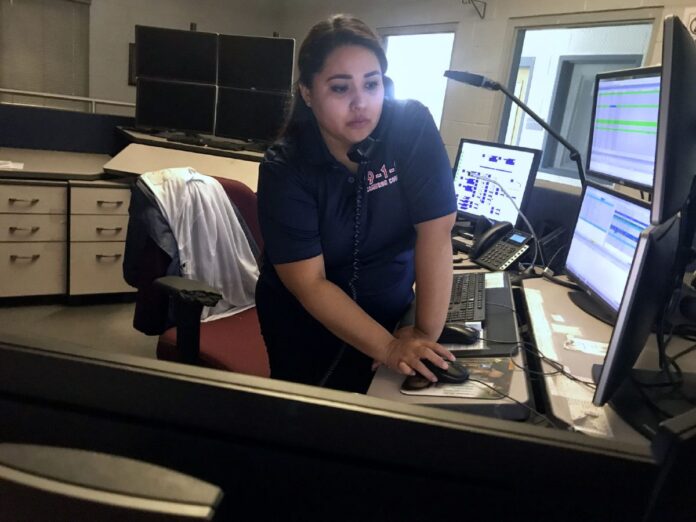HARLINGEN — Afraid of tipping off their location to the gunman, high school students in Parkland, Florida, whispered in calls to 911 or quietly texted family to call the number for them.
A few months later, in Michigan, a woman was able to send off short text messages to 911 dispatchers after her husband held her daughter hostage.
Enough information was sent through a text that officers were able to formulate a plan to stop the man before he could harm the family.
The first 911 call was made 50 years ago this year. Today, text messaging is one of the newest forms of technology being used to reach emergency call centers.
But unlike most emergency center districts throughout the nation that have been slow to adapt the technology, Cameron County has been ahead of the curve.
You can text 911 in the county and receive help.
The county did not waste time in equipping its dispatchers with the new technology once they were informed of a national mandate that required emergency call centers to figure out how to implement text 911, said Joe Garcia, public education and training coordinator for Cameron County Emergency Communication District.
“Instead of waiting to see what others were doing, we went ahead and contacted our vendor who is AT&T, and said, ‘hey, what do we need to outfit our district to be able to receive texts,’” Garcia said.
According to the FCC, in 2015, Cameron County was among only five percent of the districts nationwide that had the technology, leading the way for other counties such as Hidalgo, which joined last year.
How it works
Pulling out his phone, Garcia types out a text message to 911 as a test.
A minute passes before he receives a response from an operator who begins the questioning.
In a dispatch center at Fire Station No. 3 in Harlingen, three women sit in front of six large computer screens taking calls for 911.
The room is kept cool to keep the computers from overheating and left dim to prevent any eyestrain to the people taking the calls.
A small siren is heard as the emergency text message pops up on one screen while a map with an estimated location circled in red is on another screen.
Unlike landlines, cell phones are harder to pinpoint on a map, which can lead to dispatchers having to reroute a call to the right office.
Because Garcia is texting from his office outside of city limits, the 911 operator must redirect his message to a different dispatch for the sheriff’s office.
Another two minutes pass.
Text message calls come in slowly and are similar to a message from a TTY, a communication device mostly used by the deaf or hard of hearing.
Garcia said calling is still the best form of communication, but if texting is the only option, he recommends typing out as much information in the first text before sending it.
One dispatch operator who has been working dispatch for five years said receiving 911 texts is rare but when she does, it’s usually not for emergencies.
“It’s very rare,” she said. “The first time I got one it was, ‘does anybody want to buy tamales,’ on 911.”
According to the operator, there have been very few instances where she received actual emergency text messages.
In certain circumstances it may be the only way to communicate for help.
What’s next?
While texting is certainly an improvement and a step in the right direction, the county is still working on new ways to make the calling process easier and faster.
Later this year, the district’s provider will release an update that will change the way text messages come in, making it faster for dispatch to respond.
“It’s part of the next generation 911,” Garcia said. “There are a few things changing.”
In addition to the update, the district will be coming out with real time texting that will allow dispatch operators to read texts from callers before they hit the send button.
“If you have some type of emergency where you don’t get to hit that send button,” Garcia said. “Imagine if someone is breaking into your house and you’re sending a text message and that person finds where you’re at and you’re unable to send it but you typed it in your phone, that operator will be able to see that.”
Garcia said the system does not currently support pictures but in the future he predicts dispatchers will be able to receive photos and Livestream videos.
“It’s hard because nowadays everything is online or Facebook,” Garcia said. “The vendors are still trying to develop programs that will support it.”
Sign up for Reverse 911 to be notified in the case of an emergency. Visit CameronCounty911.com to learn more.
• Accidentally call? Don’t hang up. Wait on the line to tell them there is no emergency.
• Don’t speak English? The emergency number can translate a call to more than 100 languages.
• Only certain carriers are able to text 911 including Sprint, Verizon, AT&T and T-Mobile.
• Texting? When texting the emergency number, provide as much information as possible in the first text.
• When calling, speak clearly and give information about location and the type of emergency.
• Location is one of the most important pieces of information that dispatch needs.




